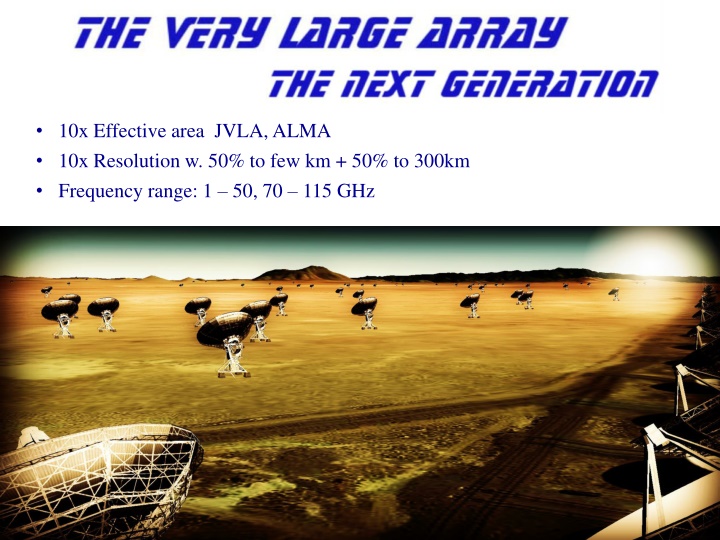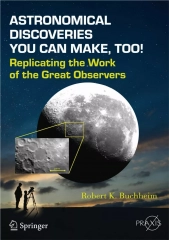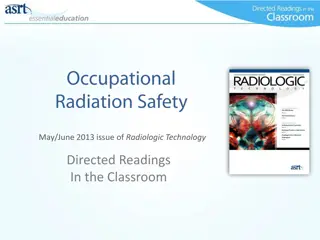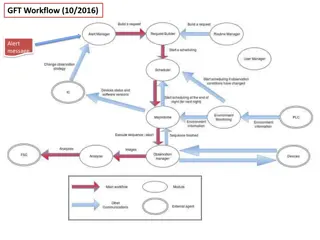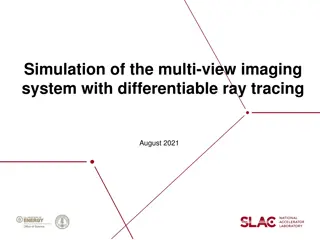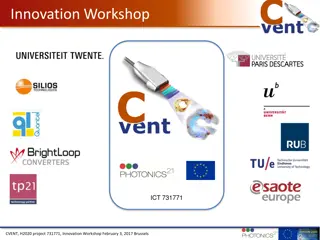Cutting-Edge Astronomical Research and Imaging Technologies
Explore the latest advancements in radio astronomy with instruments like JVLA and ALMA, enabling high-resolution imaging and effective area enhancements for a wide frequency range. Discover insights into galaxy ecosystems, planet formation, and exoplanet detection through innovative imaging techniques offering unprecedented sensitivity and resolution in the quest for understanding our universe.
Download Presentation

Please find below an Image/Link to download the presentation.
The content on the website is provided AS IS for your information and personal use only. It may not be sold, licensed, or shared on other websites without obtaining consent from the author.If you encounter any issues during the download, it is possible that the publisher has removed the file from their server.
You are allowed to download the files provided on this website for personal or commercial use, subject to the condition that they are used lawfully. All files are the property of their respective owners.
The content on the website is provided AS IS for your information and personal use only. It may not be sold, licensed, or shared on other websites without obtaining consent from the author.
E N D
Presentation Transcript
10x Effective area JVLA, ALMA 10x Resolution w. 50% to few km + 50% to 300km Frequency range: 1 50, 70 115 GHz
JVLA: Good 3mm site, elev. ~ 2200m Residual phase rms after calibration 90% coherence 550km
Process to date https://science.nrao.edu/futures/ngvla AAS Community Day January 2015 Science working group white papers October 2015 Circle of Life (Isella, Moullet, Hull) Galaxy ecosystems (Murphy, Leroy) Galaxy assembly (Lacy, Casey, Hodge) Time domain, Cosmology, Physics (Bower, Demorest) Technical meetings April 2015 Pasadena: Antennas, Receivers, Correlator December 2015 Socorro: Operations, Post-processing, LO/IF Future AAS Community Day January 4 2015 Key Use Cases science requirements telescope specs (small grants?) Third Technical meeting ??
Killer Gap Thermal imaging on mas scales at ~ 0.3cm to 3cm 1AU @ 140pc Terrestrial zone planet formation Resolution ~ 10mas @ 1cm (300km)
Killer Gap Thermal imaging on mas scales at ~ 0.3cm to 3cm Sensitivity ~ 0.1uJy @ 1cm, 10hr, BW = 20GHz TB ~ 1K @ 1cm, 10mas Molecular lines become prevalent above 15GHz
SWG1: Terrestrial zone planet formation imager ALMA 250GHz Brogan ea. 100AU 0.7 at 140pc Protoplantary disks: Inner ~ 20AU disk optically thick in mm/submm ngVLA cm: Grain growth and stratification from dust to pebbles to planets. Simulation: Jupiter at 13AU, Saturn at 6AU: annual motions Circumplanetary disks: planet accretion Pre-biotic molecules: rich spectra in 0.3cm to 3cm regime ngVLA 25GHz @ 10mas rms = 1K model model Glycine Jimenez-Sierra ea 2014
Next-Gen Synergy: Solar-system zone exoplanets ALMA is to HST/Kepler as ngVLA is to HDST High Definition Space Telescope Terrestrial planets: top science goal Direct detection of earth-like planets Search for atmospheric bio-signatures ngVLA Imaging formation of terrestrial planets Pre-biotic chemistry
SWG3: Cool Gas History of the Universe Tracing the fuel for star formation through time Low order CO = primary molec gas mass tracer Dense gas tracers (HCN, HCO+ ) 10x sens. => CO emission z > 1 main sequence galaxies in 1hr: Mgas ~ 109 Mo Blind surveys: hundreds of galaxies per hour (vs. ~ 1 w. JVLA) Sub-kpc imaging large scale gas dynamics (not just dense cores) w. ALMA: Gas excitation, dust + SF laws 1 = 7kpc
Next-Gen Synergy: Cosmic Gas to Stars Cycle ngVLA: cold gas driving cosmic star formation JWST/TMT: stars and star formation
HCN M51 SWG2: wide field imaging10x faster than ALMA ( gold mine Leroy) MW/Local group science out to Virgo! Spectral lines Ground state transitions of primary astrochemical, dense gas tracers Unprecedented view of Baryon Cycle Broad-Band Continuum Synchrotron, free-free, cold (spinning?) dust, SZ effect Obscuration free estimates of SFR Physics of cosmic rays, ionized gas, dust, and hot gas around galaxies ngVLA
SWG4: Exploring the Time Domain NGVLA most sensitive telescope to study broad-band temporal phenomena Explosive Universe (TDEs, GRBs, Blazars, GW/EM, FRBs?): high frequency peaks higher and earlier Exo-space weather: exo-planet environments and the development of life Thermal stellar winds to 10-13 Mo/yr Brown dwarf Auroras: Star-planet magnetospheric interactions Key drivers of exo-space weather Synergy: LSST, LIGO, FERMI++
SWG Reports: Requirements to Specifications Science Requirement Array Specification TPF Optically thin Freq ~ 15 to 50GHz 1AU at 130pc @ 30GHz B ~ 300km 1K in 10hrs @ 10mas, 30GHz Afull ~ 300 x 18m; BW ~ 20GHz Freq = 15 to 115GHz CGHU CO 1-0 to z=8 Mgas = 109 Mo at z = 3 in 1hr 500pc resolution at z = 3 (60mas) Amid ~ 70% to B ~ 30km 30km Large volume surveys Octave Band Ratio Baryon Cycle TB < 0.2K (1hr, 10 km/s, 80GHz, 1 ) Continuum science Acore ~ 30% to B ~ 2km Octave BR; Linear pol to 0.1% Time Domain Explosive follow-up (GRBs, GW/EM ) Minute trigger response time Blind discoveries (eg. FRBs) millisec searches Exo-space weather: 1uJy in 1min Freq ~ 1 to 20GHz Afull ~ 300 x 18m Circular pol to few %
Next Steps: Requirements to Specifications Antennas 12m to 25m: FoV requirements On vs. off axis Configuration: need simulations Balance: Core (1km) vs. mid (30km) vs. long (300km) Some fraction reconfigurable Need for large single dish + cameras or compact array Receivers Band ratios: performance v. number Low frequency limit Phase Calibration: testing at JVLA VLBI implementation: need simulations New stations vs. ad hoc
VLBI uas astrometry Spiral structure of MW: masers in SF regions to far side of Galaxy Local group cosmology: proper motions + parallax w. masers + AGN: 0.1 uas/yr => dark matter, fate MW, real-time cosmology (local Hubble expansion) Not DNR limited imaging => include few big antennas ~ 10% area? Reid ea Local group proper motions 0.1 uas/year = 0.4 km/s! (Darling)
